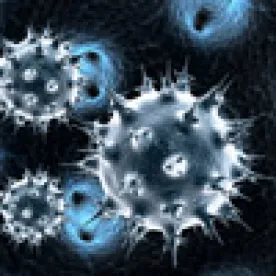On September 2, 2016, the U.S. Environmental Protection Agency (EPA) issued guidance to registrants on the process for making claims against emerging viral pathogens not on EPA-registered disinfectant labels (Guidance). A draft of this guidance was issued in April 2016 and comments were sought at that time.
The current Guidance document, which EPA states “provides general guidance to registrants that can be used to identify effective disinfectant products for use against emerging viral pathogens and to permit registrants to make limited claims of their product’s efficacy against such pathogens,” includes changes incorporated following EPA’s review of the three public comments received in response to that draft.
The Guidance retains the voluntary two-stage process, but amends the first stage as indicated:
-
In the first stage, which may be performed prior to any outbreak, registrants with an eligible disinfectant product may submit a request, via label amendment or during the registration of a new product, to control a specific emerging viral pathogen to add a designated statement to the master label and additional terms to the product registration. If the product meets the eligibility criteria suggested in this Guidance, [EPA] generally will approve the amendment. Approval of the amendment would include additional terms and conditions of registration regarding how the designated statement may be published and communicated.
In its response to comments document, EPA responded to several comments, including:
-
Changes were made to EPA’s mandated non-label statements to remove certain language that could be considered redundant.
-
EPA is developing a coordinated process with the Centers for Disease Control and Prevention for the purpose of providing a more standardized and consistent approach to emerging viral pathogen outbreaks. Once this process is established, the agency expects to consult with the U.S. Department of Agriculture to develop a similar approach.
-
The Guidance document allows for the addition of emerging pathogen claim language to the master label during the new product registration process if the product is eligible. Additional language has been added to multiple locations in the Guidance document to clarify that the process is appropriate for new product registrations.
-
EPA “may consider allowing use of additional modes of claim communication under future versions of this Guidance document, however, hangtags and other promotional materials are not authorized at this time. Because the statements authorized under this Guidance are pesticidal claims that do not meet the FIFRA registration criteria, it is essential that these off-label claims are not made outside of an emerging pathogen outbreak as described in the Guidance. Accordingly, the Guidance limits these off-label claims primarily to communications outlets that are wholly within the registrant’s control (800 numbers, social media and websites) from which the off-label claims can be immediately removed. Hangtags and other promotional materials directed towards general consumers are largely out of the registrant’s control once the products enter the chain of commerce, and may persist long after the period during which the off-label claims are authorized.”
EPA also notes that this Guidance document “provides general guidance to EPA, pesticide registrants, applicants for pesticide registrations, and the public. This guidance is not binding on EPA or any outside parties, and EPA may depart from the guidance where circumstances warrant and without prior notice.”



 />i
/>i

